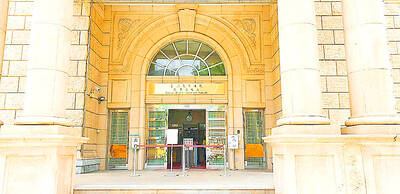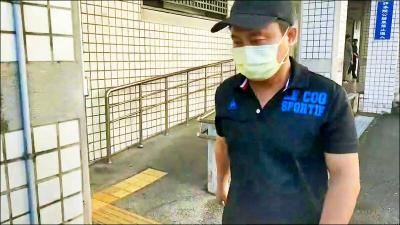Full-time taxi drivers last year on average earned NT$46,045 a month, a NT$1,583 decrease from 2015, a report on taxi operations released every two years by the Ministry of Transportation and Communications said.
The data did not show whether the decrease was due to competition from Uber, the ministry said, adding that the US platform entered Taiwan in 2013, but the average monthly income of full-time taxi drivers had increased by NT$2,333 from 2013 to 2015.
There is about a 3 percent difference between the time period in which the data were collected for 2015 and last year, so the decrease might not reflect an actual decrease in drivers’ income, it said.
The data showed that from 2015 to last year, full-time drivers’ average monthly operating costs increased by NT$266, from NT$20,498 to NT$20,764.
Drivers who belonged to a taxi fleet had an average monthly income of NT$50,951 last year, NT$10,519 more than those who did not, the data showed.
Average monthly operating costs for those who were members of a taxi fleet was NT$4,444 higher than for non-affiliated drivers, but affiliated drivers still earned a net NT$6,000 more than independent ones, the report said.
More than 51.1 percent of full-time taxi drivers were members of a fleet last year, the data showed, the first time that more than half were part of one.
Drivers said they did not join a fleet because they did not want to be managed or restricted by a taxi company (36.2 percent) or the fees were too high (22.5 percent), the ministry said.
Full-time drivers worked an average of 9.8 hours per day last year, but their cars were vacant for 3.1 hours, or 31.6 percent, of those hours, the report said. They covered an average of 139.6km per day, 41.1km of which was without passengers, it said.
Compared with 2015, the taxis’ idle hours declined by 1.4 percent and distance driven without passengers fell by 1 percent, the report added.
The falling vacancy rates might have to do with changes in the way that drivers find passengers, as technology has helped reduce the time and distance taxis need to drive to pick up the next rider.
There were 87,604 registered taxis in Taiwan last year, 625 more than in 2015, the data showed.
Taipei and New Taipei City had the highest number of registered taxis at 28,450 and 22,243 respectively, the report said.
Taxis in the two municipalities made up 57.9 percent of taxi registrations nationwide last year, but the number in both municipalities declined by 300 to 400 from 2015 to last year, it added.

South Korean K-pop girl group Blackpink are to make Kaohsiung the first stop on their Asia tour when they perform at Kaohsiung National Stadium on Oct. 18 and 19, the event organizer said yesterday. The upcoming performances will also make Blackpink the first girl group ever to perform twice at the stadium. It will be the group’s third visit to Taiwan to stage a concert. The last time Blackpink held a concert in the city was in March 2023. Their first concert in Taiwan was on March 3, 2019, at NTSU Arena (Linkou Arena). The group’s 2022-2023 “Born Pink” tour set a

CPBL players, cheerleaders and officials pose at a news conference in Taipei yesterday announcing the upcoming All-Star Game. This year’s CPBL All-Star Weekend is to be held at the Taipei Dome on July 19 and 20.

The Taiwan High Court yesterday upheld a lower court’s decision that ruled in favor of former president Tsai Ing-wen (蔡英文) regarding the legitimacy of her doctoral degree. The issue surrounding Tsai’s academic credentials was raised by former political talk show host Dennis Peng (彭文正) in a Facebook post in June 2019, when Tsai was seeking re-election. Peng has repeatedly accused Tsai of never completing her doctoral dissertation to get a doctoral degree in law from the London School of Economics and Political Science (LSE) in 1984. He subsequently filed a declaratory action charging that

The Hualien Branch of the High Court today sentenced the main suspect in the 2021 fatal derailment of the Taroko Express to 12 years and six months in jail in the second trial of the suspect for his role in Taiwan’s deadliest train crash. Lee Yi-hsiang (李義祥), the driver of a crane truck that fell onto the tracks and which the the Taiwan Railways Administration's (TRA) train crashed into in an accident that killed 49 people and injured 200, was sentenced to seven years and 10 months in the first trial by the Hualien District Court in 2022. Hoa Van Hao, a